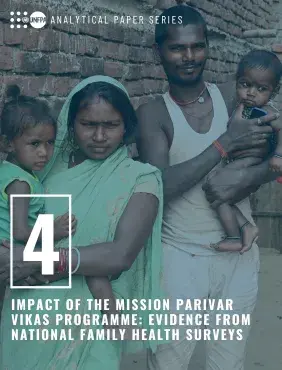The ‘Mission Parivar Vikas’ was launched in 2016 for increasing access to contraceptives and family planning services in the identified 146 high fertility districts in seven states, which had a Total Fertility Rate (TFR) more than 3. Various promotional schemes, activities and campaigns were organized to increase demand, while capacity building of health professionals and logistics management systems were intensified to strengthen the supply side. District level key indicators from the two rounds of the National Family Health Surveys (NFHS) provided an opportunity to examine changes in the intervention districts, as compared to non-intervention districts, in the states. A multivariate statistical analysis was used to estimate the impact of the programme. The findings indicate that the districts under Mission Parivar Vikas (MPV) programme had lower levels of family planning outcomes prior to the programme, compared to non-MPV districts. During the implementation, the uptake of modern contraceptives improved faster in the programme districts with a statistically significant difference-in-differences, thus indicating a positive impact of MPV interventions. Despite significant improvement over the years, the current levels of use of reversible methods are still very low and requires immediate attention.
What we do
Analytical Paper Series - Impact of the Mission Parivar Vikas Programme: Evidence from National Family Health Surveys

Publisher
Number of pages
4
Author
UNFPA India
Technical Reports and Document
Analytical Paper Series - Impact of the Mission Parivar Vikas Programme: Evidence from National Family Health Surveys
Publication date
14 April 2023

